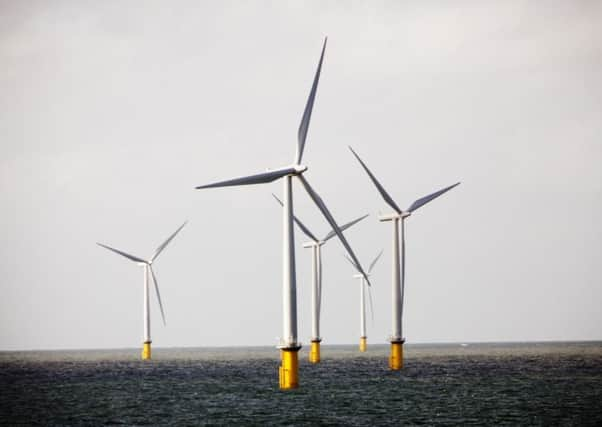Colin Gibson: Time we faced fact wind and solar power costly


Events in March highlighted the deepening malaise of Britain’s energy industry; our electricity is proving too expensive for heavy industries and the subsidised expansion of intermittent renewables has disrupted supply to the point where cheap, efficient gas generators are forced to operate uneconomically and operators are reluctant to build new capacity.
George Osborne seemed to understand in 2011: “I am worried about the combined impact of the green policies adopted not just in Britain, but also by the EU, on some of our heavy, energy-intensive industries.
Advertisement
Hide AdAdvertisement
Hide Ad“We are not going to save the planet by shutting down our steel mills, aluminium smelters and paper manufacturers. All we’ll be doing is exporting valuable jobs out of Britain.”
In 2009 (Anglesey) and 2011 (Lynemouth) aluminium smelters closed as a result of high energy prices. And now, closure of Tata Steel’s plants in Motherwell, Scunthorpe and Port Talbot has been blamed, in part, on our high energy prices. Ironically, the devolved governments of Wales and Scotland have both driven more than their per-capita share of Britain’s renewable electricity industry, the chief cause of high prices.
We are apparently locked into a programme of renewable subsidies for at least the next 20 years. Policy was based on the assumption that wind farm costs would fall and gas prices would rise. The rising, high cost of offshore wind generation illustrates the inability of the UK wind industry to reduce costs just as current low gas prices illustrate the impossibility of forecasting commodity prices.
The capital cost of our offshore wind farms has increased at 17 per cent annually for the last 16 years, and this trend looks set to continue. The cost of onshore wind continues to increase at 4 per cent. In contrast, the government sponsored Offshore Renewable Energy Catapult claims that the most realistic measure of energy over the lifetime of a wind farm, the so-called Levelised Cost Of Energy, is set to fall below £100/MWh (10p/KWh) by 2020. However, this relies on some heroic assumptions about future maintenance costs, turbine efficiency and rates of inflation.
More realistically, the cost seen by the Generator will be more like £250/MWh. There is an additional cost of about £40/MWh needed to achieve the required security of supply for the inherently intermittent output of wind farms, so the cost carried by customers will be about £290/MWh plus any extra transmission capital costs and losses.
Contrast that with a combined cycle gas turbine (CCGT) with a fuel cost of £10/MWh, and a final cost of £30-40 /MWh at the 90 per cent load factor achieved under normal conditions. (although this increases to, say, £60/MWh at 50 per cent annual load factor). Consumers and industry could be paying lower electricity bills if we built more gas-fired stations.
So, with cost of electricity from offshore wind some five times that of gas generation, there is an urgent need for the basic premise that ‘wind is good’ to be re-assessed in the customers’ interest. However, gas plant operators seem reluctant to enter a market where the conventional concept of baseload generation is disappearing. After deduction of all renewable and nuclear generation, the load pattern the CCGT owners would be obliged to follow would be very variable, and would require part load operation of their plants. That reduces plant efficiency (and increases emissions of carbon dioxide), increases maintenance costs, and would probably increase staff costs. They will probably think they can make easier money elsewhere and not bother with the UK.
In recent months, five coal fired plants closed, with the loss of over 8GW of capacity (Longannet, Rugely, Eggborough, Fiddler’s Ferry and Ironbridge); and the last deep coalmine closed. In March further problems surfaced about the planned Hinckley C nuclear plant, with EdF engineers questioning the reactor design and management voicing concerns about financing the project.
Advertisement
Hide AdAdvertisement
Hide AdThe ambitious plan to reduce the carbon dioxide emissions of our national energy system was initiated with little thought about the viability of the technologies (wind and solar) we were going to use. Ten years on, their failings are clear. All suffer from high plant costs, low efficiency, and short lives. There is no cheap solution to the intermittency of wind and solar. There are even concerns about grid stability (especially in Scotland post Longannet).
The UK needs to rethink its way forward on electricity generation, – quickly.
• Colin Gibson, Scientific Alliance Scotland